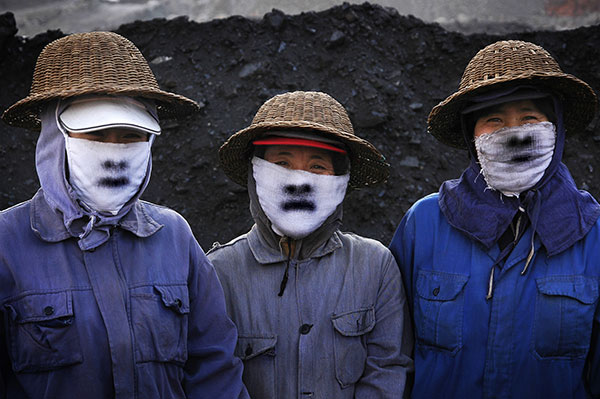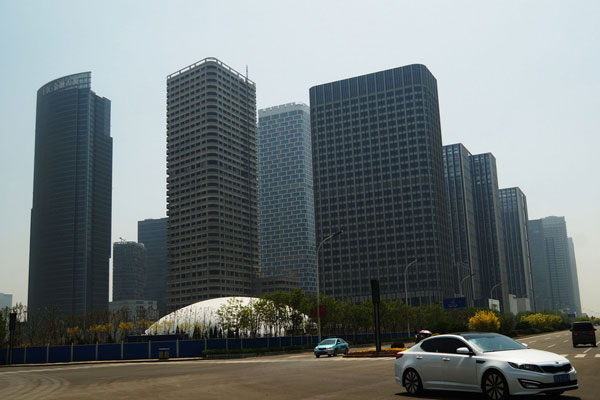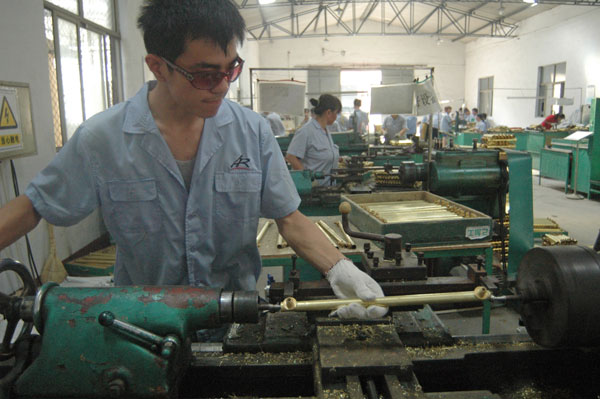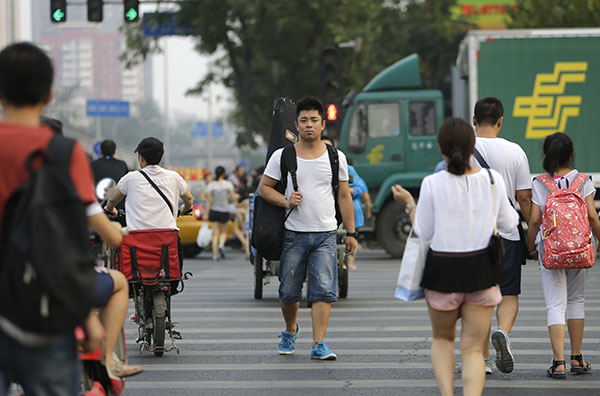From powerhouse to poor relation
Updated: 2015-08-13 07:52
By Zhou Huiying(China Daily)
|
|||||||||||
The northeast was once China's industrial heartland and drove the country's development, but a decline in manufacturing and an economic slowdown have resulted in a rapidly aging society as young people move south to look for work and a higher standard of living. Zhou Huiying reports from Harbin.
|
Street musician Zhang Mingyuan carries a guitar for his daily performance at a square outside a shopping mall in Beijing. Zhang, from Daqing, Heilongjiang province, is one of many young people who are unable to find good jobs in Northeast China, and leave their homes to seek opportunities in other regions. [Jason Lee / Reuters] |
During the last century, the northeast was one of the first regions in China to embrace industrialization. In the early 1950s, Heilongjiang, Jilin and Liaoning, the three provinces that make up the northeast region, were key areas for investment and construction, and attracted a huge number of migrants from across the country looking for work in the region's heavy industries.
During the first Five-Year Plan (1953-57) about one-third of 156 key projects built with the assistance of the former Soviet Union were located in the northeast, and the people of the region were proud to have created numerous "firsts", such as China's first jet aircraft, first 10,000-ton ship, first combined machine tool and first internal combustion engine.
The luster has worn thin since those days. The region has been in decline since an economic downturn started in 1990. Huge numbers of workers have lost their jobs and the region's industrial output continues to fall in relation to the nation as a whole. The northeast has also been handicapped by a low fertility rate and large labor outflow, resulting in a rapidly aging society and hampering recovery attempts.
Last year, GDP growth in the three provinces ranked among the bottom five in China, and the average rate of growth was slower than in the central, western and eastern regions.
In 2010, China's sixth national census showed a net outflow of 1.8 million people, predominantly young or middle-aged, from the three provinces, as workers moved to better-developed areas such as Beijing, Tianjin and Shenzhen in Guangdong province. By contrast, in 2000, the northeast saw a net population inflow of 360,000.
New town, new life
After failing the gaokao, China's national college entrance exam, in 2001, Li Peng left his hometown of Hegang, a prefecture-level city in northeastern Heilongjiang province, and moved to Beijing. His family promised to help him find a steady job in Hegang, but Li, now 33, rejected the offer to return home and earn a steady income in a small city, describing it as his idea of "a horrible life".
He decided to soldier on in the capital. He lived in a 15-square-meter basement - his parents paid the rent - and changed jobs from fast food delivery boy to secondhand bicycle seller.
Things began to improve in 2008, when Li and a friend began selling camping equipment and other outdoor goods on Taobao, China's largest online marketplace. The same year, Li bought a pre-owned 56-square-meter apartment in the district of Daxing, again with help from his parents, who made the first mortgage payment. Seven years later, his online store has a stable customer base and Li earns about 300,000 yuan ($48,300) a year, a substantial income in China.
He and his wife, a Beijing native, take two-week vacations in his hometown every summer and winter, but have no intention of moving there. "Although my wife enjoys the vacation every time we go back, I know she would never agree to live there. And, as I know, the economic condition of Hegang, which is reliant on the coal industry, is becoming worse every day. I don't know what jobs would bring us the same income we make in Beijing if we went back," Li said.
Today's Top News
12 firefighters among 44 killed in explosions
Chinese yuan extends fall Thursday
Tibetan drivers to finally see the end of 'death road'
China becomes world's largest robots market for second consecutive year
Yuan may stumble, but will not fall
Third Greek bailout deal submitted
to parliament
Pearson to sell 50% stake in Economist Group
Heatwave in Egypt kills at least 61
Hot Topics
Lunar probe , China growth forecasts, Emission rules get tougher, China seen through 'colored lens', International board,
Editor's Picks

|

|

|

|

|

|







